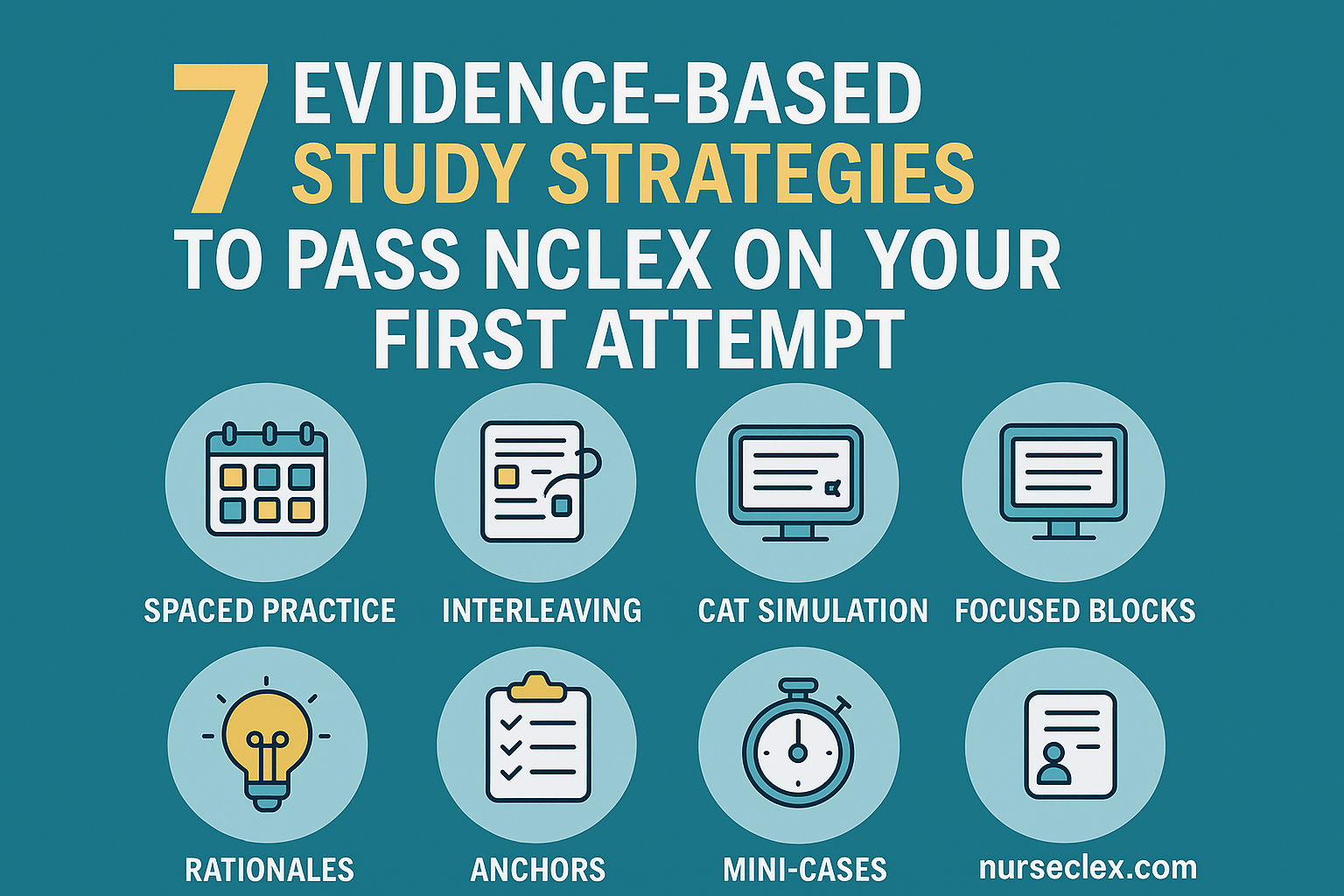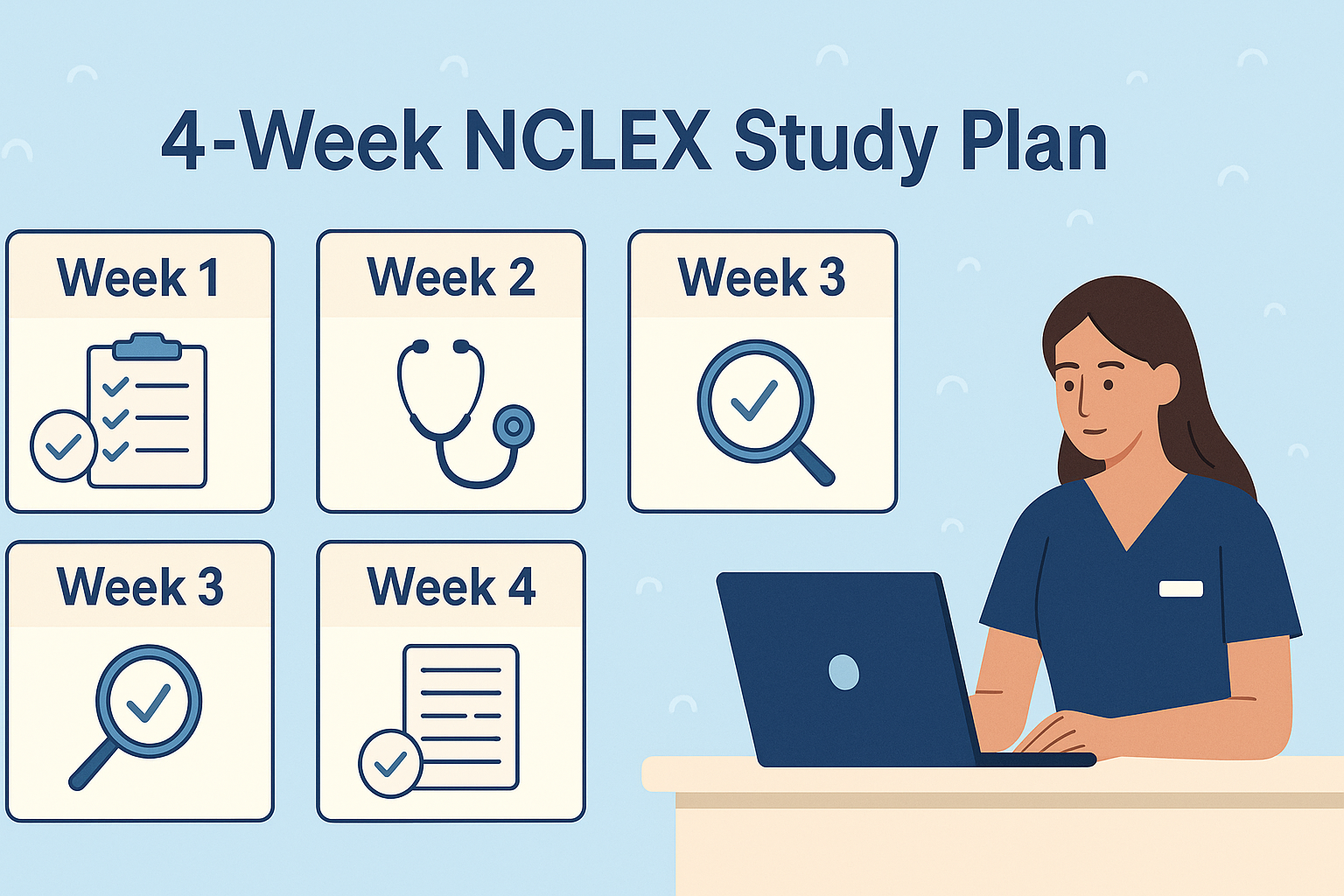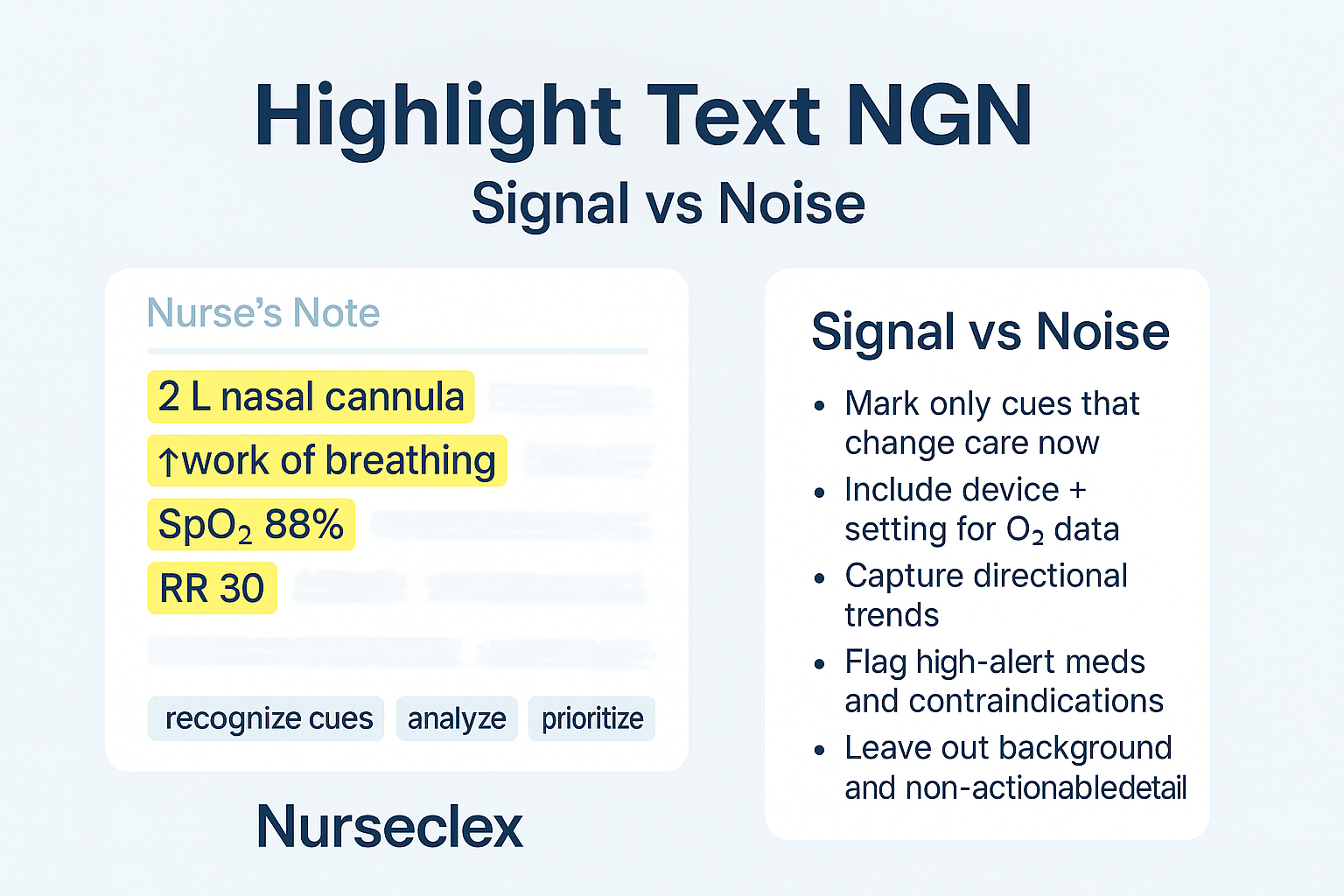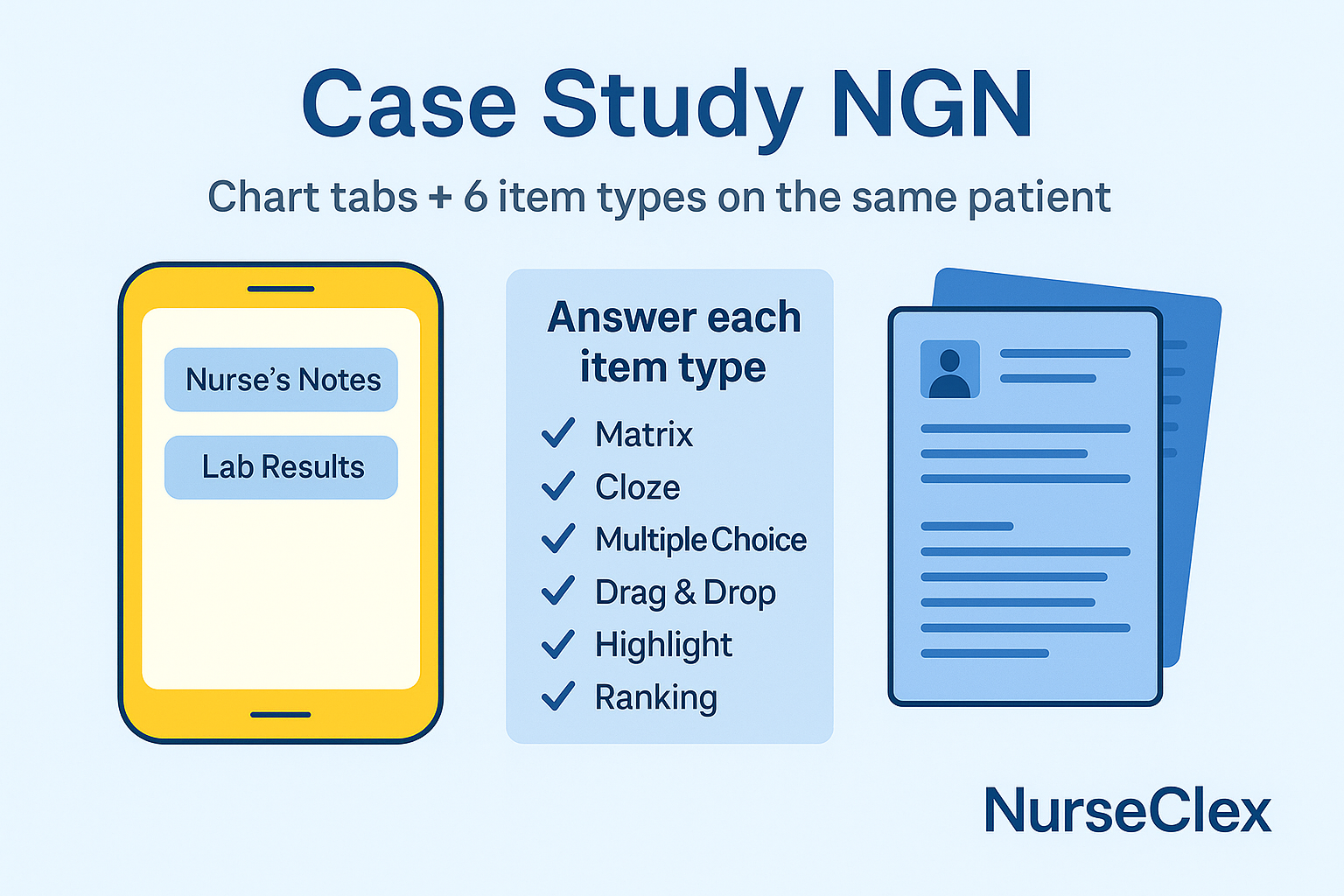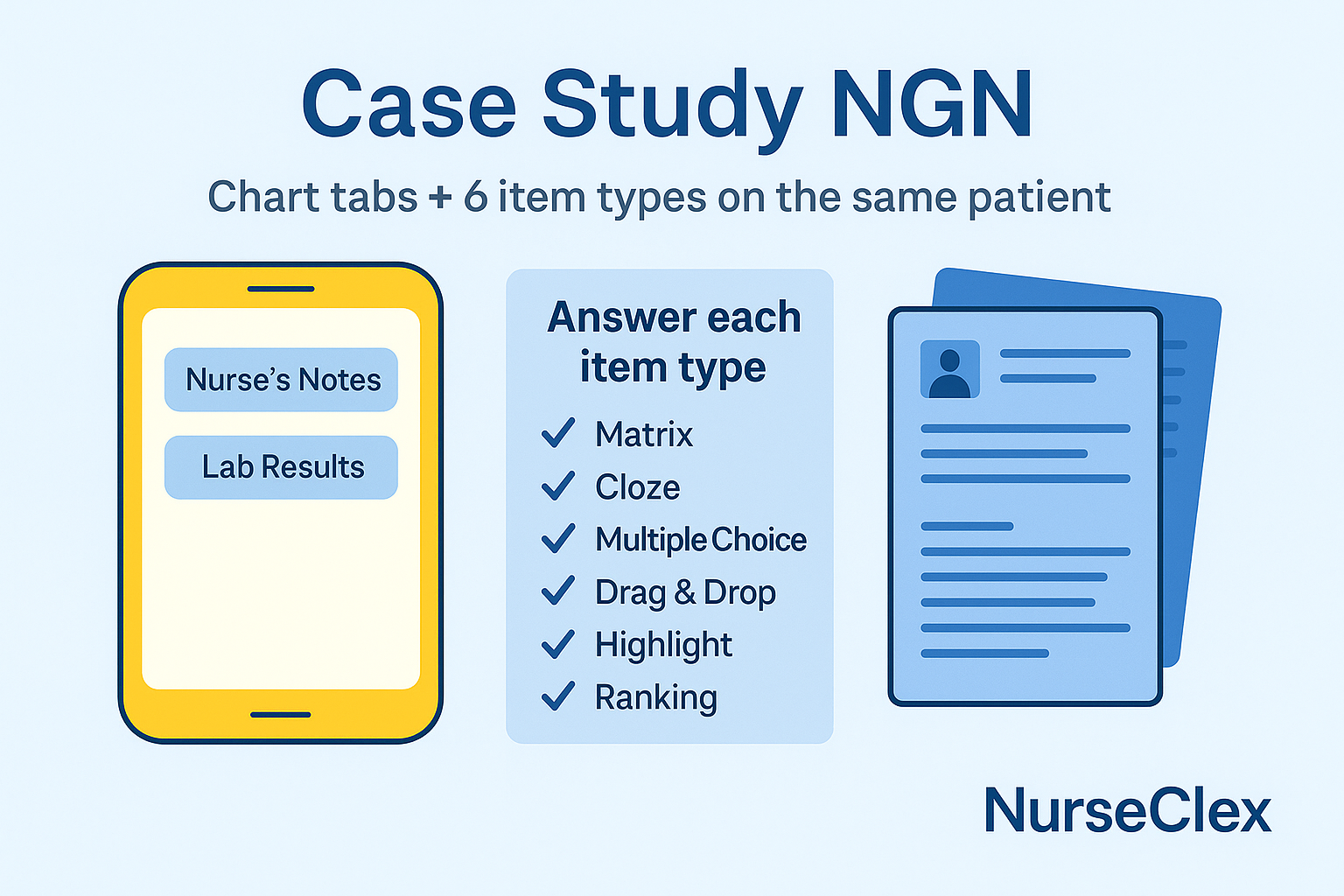You need an NCLEX study plan that works with your brain, not against it. Use these 7 cognitive-science strategies and plug-and-play 2-, 4-, and 6-week schedules to build retention, clinical judgment, and test-day calm—then practice in CAT mode with Nurseclex.
Why this NCLEX study plan works
The NCLEX uses Computerized Adaptive Testing (CAT). It rewards safe, competent judgment, not cramming. This plan is built to:
-
Strengthen long-term memory (spacing, retrieval).
-
Improve clinical decision-making (frameworks, mini-cases).
-
Reinforce safety and systems thinking under pressure.
1) Distribute your study (don’t cram)
Spaced sessions make knowledge stick.
How to apply
-
Work 15–25-question mini-sets by topic.
-
Revisit missed sets at 24 hours, then 3–5 days.
-
Tag progress: New → Review 1 → Review 2 → Mastered.
Try it on Nurseclex: Question Bank Review Filter → /study-plans
2) Mix topics like the real exam (interleaving)
Real patients—and the NCLEX—won’t stay in one lane. Interleaving builds flexible reasoning.
Example 30–40-question block
-
Cardio (8) • Endocrine (6) • Neuro (6) • Pharm (6)
-
Delegation (4) • Infection Control (4) • Psych (6)
Anchor every block with Safety/ABCs.
Run a mixed CAT block → /cat-sim
3) Practice in CAT mode
Reduce test-day shock by training like the exam.
Do this
-
Complete 3–5 CAT simulations before test day.
-
After each, reflect on:
-
Decision speed (too fast/too slow?).
-
Frameworks used (ABCs, Safety, Stability).
-
Start a CAT sim → /cat-sim
4) Read rationales like a clinician
Don’t only learn why the right answer is right. Learn why the others are unsafe.
Rationale routine
-
Summarize the patient (age, setting, priority risk).
-
Name your framework (ABCs, Stability, Maslow).
-
Explain safety/unsafety for each option.
-
Write one “micro-rule” (e.g., New neuro deficit → assess, then notify).
See step-by-step rationales → /why-nurseclex
5) Anchor rules > memorized facts
Facts fade. Frameworks guide first actions.
Foundational anchors
-
ABCs + Vitals
-
Stable vs. Unstable
-
Expected vs. Unexpected
-
Isolation principles (Airborne, Droplet, Contact)
Cheat-sheet examples
| Finding | First actions |
|---|---|
| K⁺ 2.9 | Cardiac monitoring; replete per protocol; diet review |
| Na⁺ 128 + confusion | Seizure precautions; safety; fluids per orders |
| ↑ ICP | HOB 30°, neck neutral, reduce stimuli; notify provider |
Download anchor & lab cards → /cheat-sheets
Master safest first actions → /learn/ngn/analysis-and-prioritization/
6) Mini-case prioritization & delegation
Perfect the two big questions: Who goes first? and Who gets the task?
Delegation snap rules
-
RN: Assessment, teaching, evaluation, unstable clients
-
LPN/LVN: Routine care for stable clients
-
UAP: ADLs, hygiene, stable vitals, ambulation
2-minute drills → /sets/priority-drills
Cue recognition refresh → /learn/ngn/cue-recognition/
7) Short bursts beat study marathons
Protect focus and memory with shorter blocks.
Block blueprint
-
40–60 min questions
-
10–15 min rationale review
-
5 min journal (What rule did I learn?)
Track progress in Readiness Analytics → /analytics
Ready-made NCLEX study plan templates
Pick one and plug it in.
⚡ 2-Week Fast Track
-
2–3 mixed blocks daily
-
Full CAT every Sunday
-
Rotate by system (Resp, Cardio, Neuro, etc.)
✅ 4-Week Builder (Most Popular)
-
25–30 Q × 2 per day
-
Weekly review + spaced repeats
-
Full review Saturday; rest Sunday
???? 6-Week Foundation
-
Ideal if you’re rusty or anxious
-
Mix content 4 days/week; CAT sims on weeks 2, 4, 6
-
Skills + journaling on weekends
Download the templates → /study-plans
Test week checklist
72–48 hours: Light mixed block; review weak spots.
48–24 hours: Refresh anchors (ABGs, electrolytes, isolation).
Final 24 hours: No new content. Review your “Never Again” list.
Test day
-
Breathe. Read stems twice.
-
Pick the safest first action, not the fastest.
Full checklist → /test-week
Partial-credit scoring (score insurance) → /learn/ngn/partial-credit-scoring/
Expert tips
-
Say your framework aloud before answering (“ABCs first”).
-
Don’t cram pharm—match prototype → key risk.
-
Write one “Never Again” note per block.
-
Simulate real test conditions.
-
Sleep well—memory consolidates overnight.
Start now
Load your routine with spacing, interleaving, CAT sims, rationale learning, and anchor frameworks. You’ll walk into test day calm, ready, and safety-minded.
Start your next mixed session → /cat-sim
